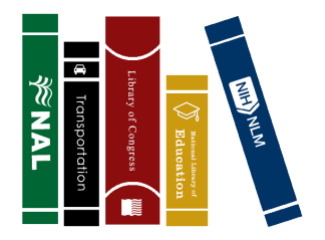Here are some useful USGS map tips from Emily Wild, Hydrologist/Librarian at the USGS:
This may be of interest if you and(or) your library users are looking for an easy-to-use tool to search, download, and easily print (by using 8×11 printer) for topographic maps published by the U.S. Geological Survey (USGS).
– Examples of recent USGS Denver Library inquiries and instruction of USGS topographic maps include, but not limited to: outdoor recreation, emergency management, disaster planning, search and rescue, bureau of investigations searches and(or) instruction, military, educational outreach, citizen science, and so on.
– Go to the “FREE!! Printable USGS PDF Quads” web site available from National Geographic:
http://www.natgeomaps.com/trail-maps/pdf-quads
– Search selected area
– Click on thumbnail image of the USGS topographic map to open pdf
– Download and(or) print the pages,
~~~~~~~
Just some quick reminders about features available for using USGS Topographic Maps:
– USGS Topographic Maps can be uploaded into Google Earth by using this USGS National Geologic Map Data Base (NGMDB) access point to search, download, and import the KMZ files : http://ngmdb.usgs.gov/maps/TopoView/
– The geopdf versions of USGS Topographic Maps can be annotated, measured, etc when users download the free TerraGo Toolbar : http://info.terragotech.com/download/terrago-toolbar
– Library users mention that the transparency feature and snapshot of all USGS topographic maps through time for a point on Earth are useful features in the USGS-ESRI’s “USGS Historical Topographic Map Explorer”
http://historicalmaps.arcgis.com/usgs/
– the how-to is available online through GPO at : http://www.fdlp.gov/all-newsletters/community-insights/2045-tricks-and-tips-for-finding-and-using-usgs-topographic-maps
~~~~~~~
And as an aside, many library users still find this map source useful for historical research of the United States :
Atlas of the Historical Geography of the United States
http://dsl.richmond.edu/historicalatlas
~~~~~~~
Enjoy the day/weekend,
Emily
Disclaimer: the use of trade, product, or firm names is for descriptive purposes only and does not imply endorsement by the U.S. Government.
Emily C. Wild
Librarian (Physical Scientist)
U.S. Geological Survey, Denver Library
Denver Federal Center
ph: (303) 236-1003
ecwild@usgs.gov
USGS Libraries: http://library.usgs.gov
Training: http://go.usa.gov/cBfmG
Profile: https://profile.usgs.gov/ecwild
 “Today, we’re asking “How many national libraries are there in the United States?”
“Today, we’re asking “How many national libraries are there in the United States?”
You must be logged in to post a comment.